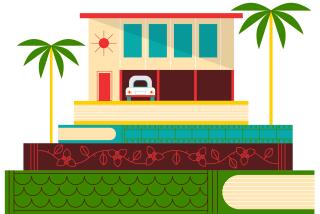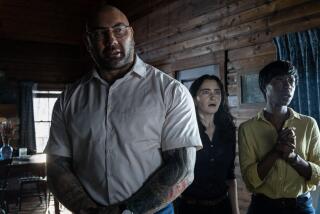DISCOVERIES
Lighthouse at the End
of the World
A Novel
Jules Verne
Translated from the French and edited by William Butcher
University of Nebraska Press: 164 pp., $15.95 paper
THIS is the first translation into English of the original manuscript of Jules Verneâs 1905 novel, âLe Phare du bout du monde.â The book, which was made into a film in 1971 starring Yul Brynner and Kirk Douglas, is set on Staten Island, 39 miles long, the last of the Magallanes Islands at the end of the Andes mountain range. The lighthouse, a âgateway to the Antarctic,â just 15 miles from Tierra del Fuego, is new and badly needed: âItâs only fair to say the Cape Horn seas are ill-famed,â says Vasquez, the 47-year-old Argentine in charge of the station. âWhy, a man couldnât even count the number of wrecks on these coasts! A looter couldnât find a better place to make his fortune.â
Vasquez, Felipe and Moriz have been left to man the lighthouse at the end of the world for three months. It is not long before mysterious things begin to happen, although it takes awhile for Vasquez and company to discover the gang of pirates led by Kongre, âa true bandit, a dangerous evildoer, stained with every crime.â Kongre and his fellow thugs have amassed a cave of treasure by preying on ships that have foundered in the treacherous waters off the island. Their goal is to lure a ship into the bay, massacre its crew, load it up with treasure and sail home.
âLighthouse at the End of the Worldâ is best read under the covers, after bedtime, by flashlight. It is a wondrous, old-fashioned adventure story, the pure essence of the genre, guaranteed to bring out the little boy, the castaway, the pirate and the lighthouse keeper in every reader. Verne wrote the novel in just over six weeks, during (as William Butcher reports in his introduction) a period of depression. He sent the manuscript to his publisher less than a month before his death, which occurred on March 24, 1905. It was revised by his son, Michel, and serialized that year in the magazine MĂR.
--
Hotel de Dream
A New York Novel
Edmund White
Ecco: 228 pp., $23.95
EDMUND WHITE, literary flâneur, here sets his sights on a city and a writer, two of his favorite subjects. The city is New York, and the writer is Stephen Crane. Crane died of consumption in 1900 at age 28. A journalist and war correspondent, he met Cora Stewart-Taylor, the madam of her own brothel, Hotel de Dream, in Jacksonville Fla., where Crane washed up in 1897 after having been shipwrecked on his way to Cuba. They settled in Sussex, England. In âHotel de Dream,â White depicts the author as already very ill and dictating his last novel -- âThe Painted Boy,â about a young, well-endowed male prostitute named Elliott -- to Cora. Crane allegedly left an unfinished novel on the subject, titled âFlowers of Asphalt,â and White imagines âThe Painted Boyâ as a companion volume to Craneâs first novel, âMaggie: A Girl of the Streetsâ (1893). White explains in a âPostfaceâ that he tried to imagine how Crane, a heterosexual afflicted with a terminal illness, might have âresponded to male homosexuality if he was confronted with it. How would he have thought about it in an era when homosexuals themselves were groping for explanations of their proclivities?â
As Crane gets too sick to continue, he tells Cora that he would like his friend Henry James to âfill in the missing scenes toward the end,â in order to produce something âsaleable.â White, whose fiction has always had an Edwardian feel (â âOh, poor Elliott!â Cora exclaimedâ), lets his mind and imagination wander over the remains and effects of a writer he clearly admired. He expands Craneâs reputation with this novel, claiming Crane as a defender of and a sympathizer with not just Bowery bums (âa reporter on the low-life beatâ) but also homosexuals and young people struggling to understand their true identity against social and cultural odds.
--
More to Read
Sign up for our Book Club newsletter
Get the latest news, events and more from the Los Angeles Times Book Club, and help us get L.A. reading and talking.
You may occasionally receive promotional content from the Los Angeles Times.








